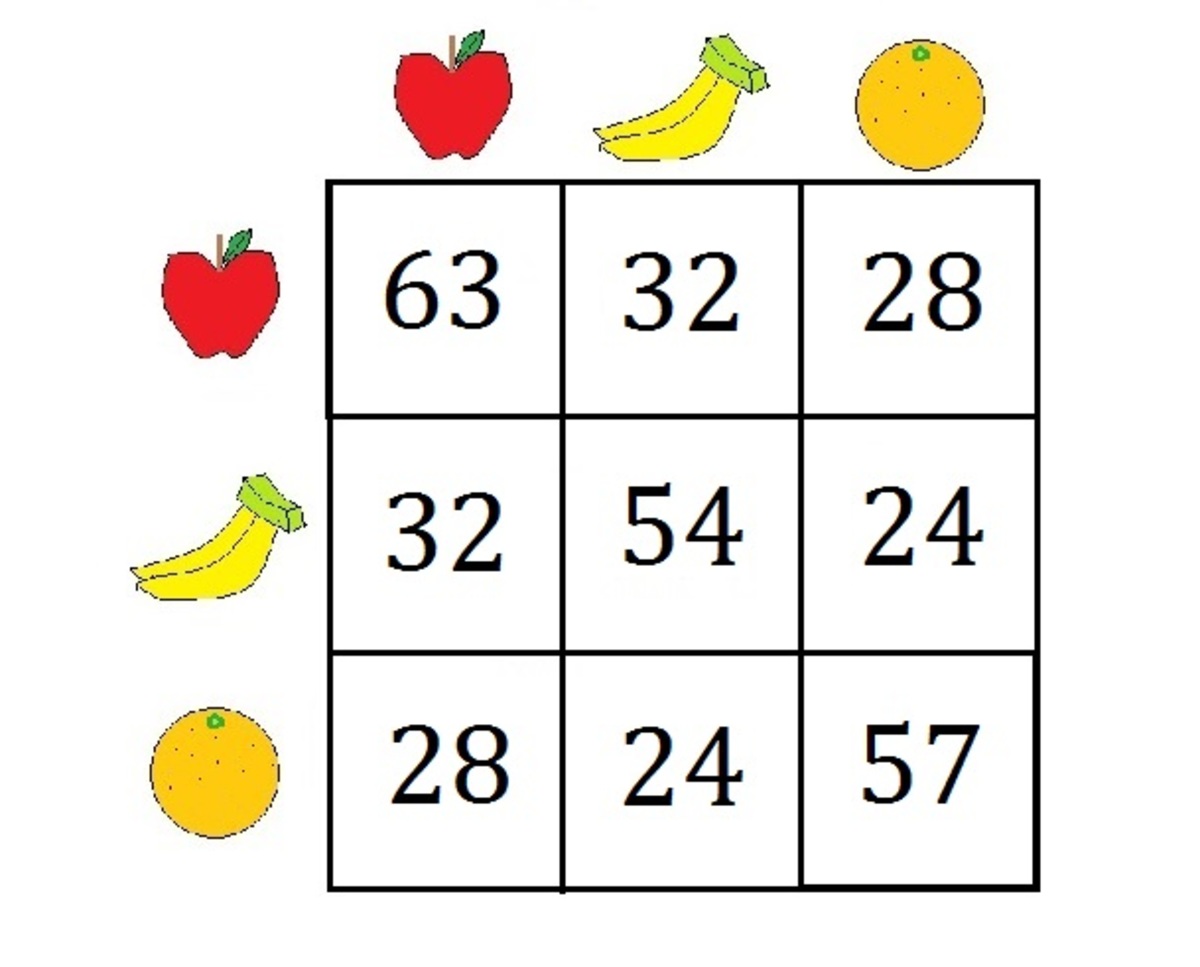Fruit Lovers

You're interviewing 100 subjects about their favorite fruits (apples, bananas, and oranges), and the number of fruit lovers are classified in the table above. For example, from the data, there are 63 apple lovers (with or without other fruits), and 24 people love bananas and oranges (with or without apples).
If everyone loves at least one kind of fruit, how many people love all 3 kinds of fruits?
The answer is 10.
This section requires Javascript.
You are seeing this because something didn't load right. We suggest you, (a) try
refreshing the page, (b) enabling javascript if it is disabled on your browser and,
finally, (c)
loading the
non-javascript version of this page
. We're sorry about the hassle.
Let A be the set of apple lovers, B be the set of banana lovers, and C be the set of citrus(orange) lovers. Since everyone loves at least one kind of fruit, the total number of fruit lovers in the universe set = 100.
We can use the formula: n ( A ∪ B ∪ C ) = n ( A ) + n ( B ) + n ( C ) − n ( A ∩ B ) − n ( B ∩ C ) − n ( C ∩ A ) + n ( A ∩ B ∩ C )
Then we can plug in the numbers:
1 0 0 = 6 3 + 5 4 + 5 7 − 3 2 − 2 4 − 2 8 + n ( A ∩ B ∩ C ) ; n ( A ∩ B ∩ C ) = 1 0 .
Therefore, there are 1 0 people who love all kinds of fruits, and the data can be presented in the following Venn's diagram: